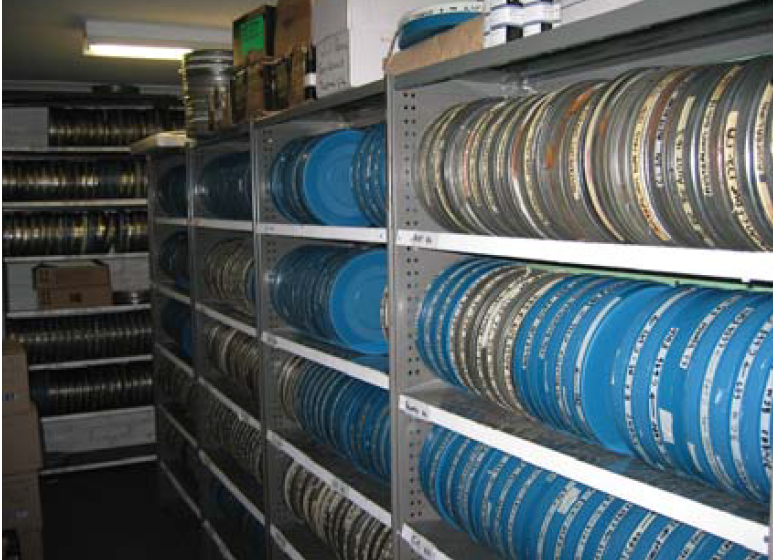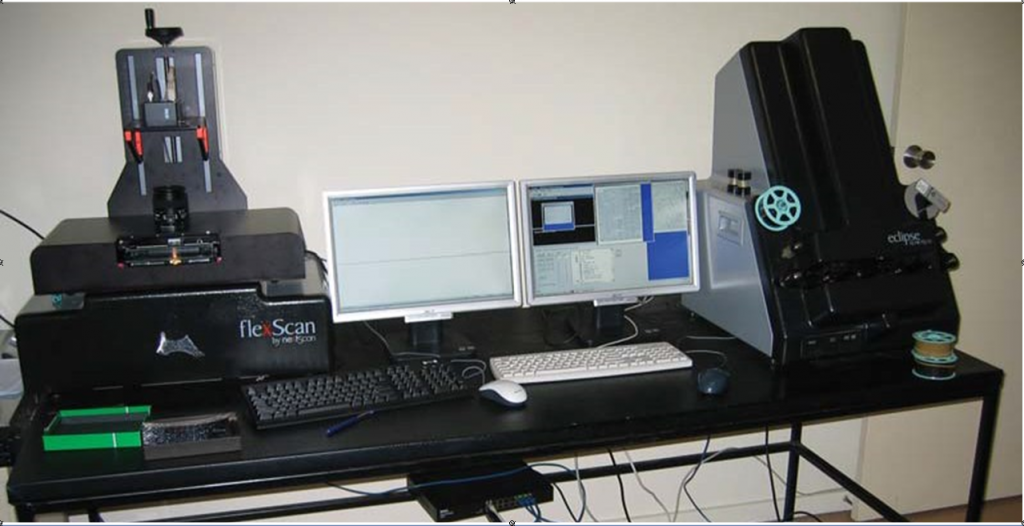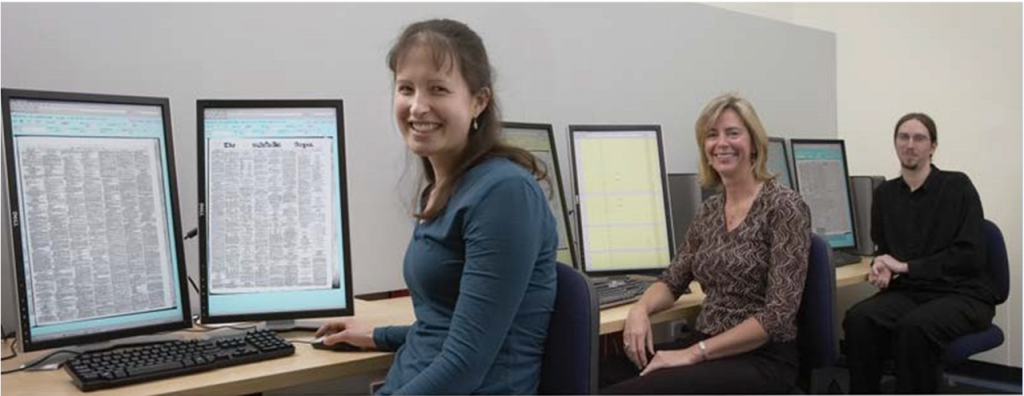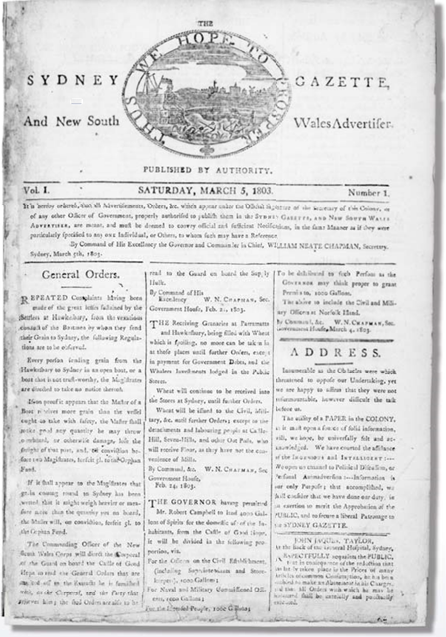
In the fall of 2006, as part of a collaborative program to locate, collect and preserve every newspaper ever published in Australia, the National Library of Australia (National Library) initiated the Australian Newspapers Digitization Program (ANDP) http://www.nla.gov.au/ndp. The ultimate goal of the Program is to vastly improve access for all Australians to the rich source of Australian documentary history that newspapers provide. Over a period of four years the National Library is working closely with the Australian state and territory libraries to digitize and make available approximately 3.5 million pages of newspaper content.
The Challenge
The scope of the ANDP is to work with the Australian state and territory libraries to source selected microfilm for out-of-copyright newspapers for the period 1803 (the date of the first newspaper published in Australia) to 1954. The initial focus is on one major title from each Australian state, including The Sydney Gazette, The Argus and The Courier Mail. The intention is to also extend the Program to include regional and community titles in the future.
The content on every newspaper page will be digitized and have Optical Character Recognition (OCR) processing applied so that the text is searchable. The articles will also be segmented and categorized so that users will be able to limit and refine searching across news articles, display advertising, classified advertising and family notices including birth death and marriage notices, which are so important for genealogical research.
Significant issues for the program include: how to convert such a vast amount of content over a 4 year period, and cost effectively no less? How to ensure that all parts of the Program will work seamlessly and within the National Library’s time-frame – from scanning of the microfilm, quality assurance, OCR processing, storage, and online access?
Stated Rose Holley, Australian Newspapers Digitization Program Manager, “We had to clearly define all steps of this Program and choose the best provider for each step. If we did not, we would be unable to meet our time and budget constraints, not to men- tion being unable to build into the future on this initiative, making even more Australian historical newspaper content available online.”
Rose Holley
Australian Newspapers Digitization Program

The Solution
The Library concluded that it could maximize its return on investment by outsourcing many aspects of the program, including the scanning, but recognized that there were a limited number of service bureaus who could undertake a project of this magnitude.
“We required high image resolution plus a robust output speed from any scanner that we included as part of the microfilm conversion solution,” stated Rose. “We also needed to capture everything in grayscale, be able to split frames as necessary in the post-processing environment, and ensure that absolutely no images get lost in the scanning process. All of these factors have a huge impact on the outcome of the digitization. If we were able to find a contractor with a scanner and software solution that could meet these very strict specifications, we knew it would help to diminish time spent on QA of scanned images, and it would provide us the best image quality for OCR, to enable full text search of the newspaper images. Ultimately, the right solution would save us much needed time and money.”

After careful consideration, the NLA chose W & F Pascoe Ltd., a specialist in the preservation microfilming and conversion of many Australian newspapers, periodicals and manuscripts since 1957.
Employing both the nextScan Eclipse and FlexScan scanners, combined with nextScan’s unique and innovative NextStar software, W & F Pascoe Ltd is able to quickly and efficiently scan source microfilm for the ANDP in its Sydney office, then transport the scanned images to the National Library in Canberra.

Stated Michael Pascoe, Managing Director of W & F Pascoe Ltd., “W & F Pascoe Ltd has found nextScan scanners to be robust, durable and easy to use and clean. They have a great scan speed and the NextStar processing software that works in tandem with the nextScan scanners is frequently being developed and enhanced, unlike many other software packages on the market today. NextStar, because of its unique Ribbon Scanning approach, enables the user to capture a whole roll of film as one image. This addresses another concern– that there are no scanning bottlenecks, frame jumping issues or lost images. The Audit and QA feature of the software is very user friendly, and can be employed at various remote workstations. The nextScan scanners and software allow us to meet the high quality standards that the National Library requires for the success of its newspaper digitization program.”
Michael Pascoe
Managing Director, W & F Pascoe Ltd.
The Results
By choosing a digitization contractor that uses nextScan technology to perform the digitization process, the National Library has achieved conversion of close to one million newspaper page images.
Emphasized Rose, “Selecting a digitization contractor that uses high quality nextScan hard- ware and software has allowed us to achieve our short term goals, and laid the foundation for completion of our long-term goals.”
About the National Library of Australia
The National Library of Australia is the country’s largest reference library. The role of the Library is to ensure that documentary resources of national significance relating to Australia and the Australian people, as well as significant non-Australian library materials, are collected, preserved and made accessible either through the Library itself or through collaborative arrangements with other libraries and information providers.
By offering a strong national focus and cooperating with others who share common goals, the Library contributes to the continuing vitality of Australia’s culture and heritage. www.nla.gov.au
About W & F Pascoe Ltd
Founded in 1957, W & F Pascoe Pty Ltd of Sydney began as a specialist in the preservation microfilming of Australian newspapers, periodicals and manuscripts. Initially working with a few newspapers and libraries, W & F Pascoe’s Ltd now works with the majority of major libraries and newspapers in the country. In the last few years, these various organizations, to include the National and State Libraries and one of the largest newspaper publishers, have expressed the desire to convert this storage medium into digital files that can be made accessible to users online with full-text search. www.pascoe.com.au
About nextScan
nextScan is a developer of leading edge technology for the micrographics conversion and document management industry. nextScan’s innovative products are designed and built with a simplicity and functionality that aim to increase user production and lower overall cost for scanning film and fiche. nextScan scanners, combined with nextScan’s revolutionary “Ribbon Scanning” software, provide a complete package that far exceeds the functionality and return on investment when compared with other scanners in the market. nextScan scanners have increased production and lowered cost for customers scanning film and fiche, including MyFamily.com, Preservation Resources, and iArchives.
